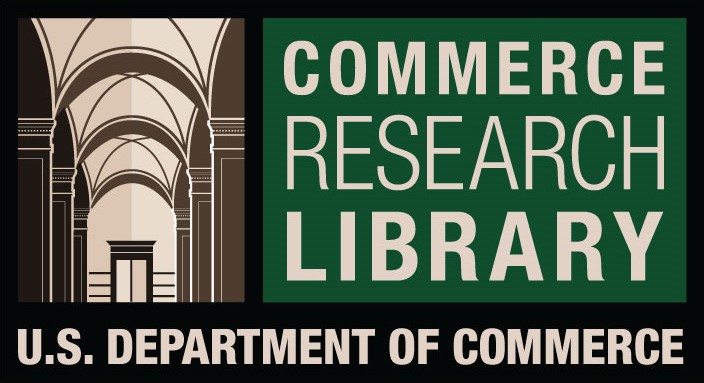Effect of Serum Copper on Circulating Angiogenesis-related Factors in Women withPreeclampsia
DOI:
https://doi.org/10.61841/dcg45c48Keywords:
Copper, endoglin, preeclampsia, VEGF-A, sVEGF-R1Abstract
Preeclampsia (PE) is characterized by a series of clinical features such as hypertension and proteinuria associated with endothelial dysfunction and the impairment of placenta vascular endothelial integrity. This study aimed to investigate the effect of serum copper (Cu) level on some angiogenesis-related factors including vascular endothelial growth factor-A (VEGF-A), soluble Fms-like tyrosine kinase-1 (sVEGF-R1), soluble endoglin (sEng) and ceruloplasmin (CP) in Iraqi women with PE and control pregnant women. Therefore, 60 women with PE in addition to 30 healthy pregnant women were enrolled in the study. Serum concentration of sEng, VEGF-A, sVEGF-R1, and Cu in PE group significantly increased (p<0.05) in the PE group compared with that in the control group. Increased production of antiangiogenic factors, soluble VEGF-A and sEng contribute to the pathophysiology of PE, indicating the involvement of these parameters in the angiogenic balance in patients with PE. Tests for between-subject effects showed that the circulating angiogenesis factors and Cu were significantly associated with the presence of PE. Serum Cu level was significantly correlated with VEGF- A and VEGF-R1 levels but not with sEng. Multiple regression analysis revealed that only Cp and BP can significantly predict the complications in women with PE. In conclusion, serum Cu has a role in the angiogenesis in women with PE and may be a new drug target in the prevention or treatment of PE.
Downloads
References
[1] N. Al-Jameil, K.F. Aziz, F.M. Khan, H. Tabassum, A brief overview of preeclampsia, J. Clin.
Med. Res. 6 (2014) 1-7.
[2] J. chen, M. Zhong, UH. Yu, Association between interleukiny polymorphisms and risk of
Preeclampsia a population of Chinese pregnant women, Genet. Mol. Res. 2 (2017) 5-16.
[3] J.T. Henderson, J.H. Thompson, B.U. Burda, A. Cantor, Preeclampsia screening: evidence
report and systematic review for the US preventive services task force, JAMA, 317 (2017)
1668-1683.
[4] Sovio U, Gaccioli F, Cook E, Hund M, Charnock-Jones DS, Smith GCS. Prediction of
Preeclampsia Using the Soluble fms-Like Tyrosine Kinase 1 to Placental Growth Factor
Ratio. A Prospective Cohort Study of Unselected Nulliparous Women. Hypertension. 2017;
69(4): 731-738.
[5] M. Furuya, K. Kurasawa, K. Nagahama, K. Kawachi, A. Nozawa, T. Takashi, Disrupted
balance of angiogenic and antiangiogenic signaling in preeclampsia, J. Pregnancy, 20 (2011)
123717.
[6] Jardim LL, Rios DR, Perucci LO, de Sousa LP, Gomes KB, Dusse LM. Is the imbalance
between pro-angiogenic and anti-angiogenic factors associated with preeclampsia? Clinica
Chimica Acta. 2015; 447:34-38.
[7] T. Miyake, K. Kumasawa, N. Sato. T. Takiuchi, H. Nakamura, T. Kimura, Soluble VEGF
receptor-1 (sFLT1) induces non-apoptotic death in overian and colorectal cancer cells, Sci.
Rep., 22 (2016) 6-24853.
[8] Lara E, Acurio J, Leon J, Penny J, Torres-Vergara P, Escudero C. Are the Cognitive
Alterations Present in Children Born From Preeclamptic Pregnancies the Result of Impaired
Angiogenesis? Focus on the Potential Role of the VEGF Family Front Physiol. 2018; 9: 1591.
[9] Roberts, J. M., and Escudero, C. (2012). The placenta in preeclampsia. Pregnancy Hypertens. 2, 72–83.
[10] M. Varejekova, E. Callardo-Vara, M. Vicen, B. Viterova, P. Fikrova, E. Dolezelova, J.
Rathouska, A. Prasnicka, Soluble endoglin modulates the por-inflammatory mediates NF-KB
and IL-6 in cultured human endothelial cells, Life Sci. 175 (2017) 52-60.
[11] A.M. Blazquez-Medela, L. Garcia-Ortiz, M.A. Gomez-Marcos, J.I. Recio-Rodrigues, A.
Sanchez-Rodrigez, J.M. Lopez-Novoa, C. Martinez-Salgado, Increased plasma soluble
endoglin levels as an indicator of cardiovascular alterations in hypertensive and diabetic
patients, BMC Medicine, 8 (2010) 1-12.
[12] B. Oujo, F. Perez-Barriocanal, C. Bernabeu, J.M. Lopez-Novoa, Membrane and soluble
forms of Endoglin in preeclampsia, Curr. Mol. Med., 13 (2013) 1345-1357.
[13] Xie H, Kang YJ. Role of copper in angiogenesis and its medicinal implications. Curr Med
Chem 2009;16:1304–14.
[14] Ge´rarda C, Bordeleaua LJ, Barraletb J, Doillona CJ. The stimulation of angiogenesis and
collagen deposition by copper. Biomaterials 2010;31: 824–31.
[15] Cabassi, S. M. Binno, S. Tedeschi, G. Graiani, C. Galizia, M. Bianconcini, P. Coghi, F.
Fellini, L. Ruffinil, et al., Myeloperoxidase-Related Chlorination Activity Is Possitively
Associated with Circulating Ceruloplasmin in Chronic Heart Failure Patients: Relationship
with Neurohormonal, Inflammatory, and Nutritional Parameters. Biomed Res Int.,15 (2015)
691693.
[16] Gocmen AY, Sahin E, Semiz E et al. Is elevated serum ceruloplasmin level associated with
increased risk of coronary artery disease? Can J Cardiol 24 (2008) (3):209-12.
[17] Kennedy DJ, Fan Y, Wu Y et al. (2014) Plasma ceruloplasmin, a regulator of nitric oxide
activity, and incident cardiovascular risk in patients with CKD. Clin J Am Soc Nephrol, 9
(3):462-7.
[18] Guller S, Buhimschi CS, Ma YY et al. Placental expression of ceruloplasmin in pregnancies
complicated by severe preeclampsia. Lab Invest 88(2008) (10):1057-67.
[19] Roberts JM, Bodnar LM, Patrick TE, Powers Robert W. The role of obesity in
preeclampsia. Pregnancy Hypertens. 2011; 1(1): 6–16.
[20] HK Al-Hakeim, RAM Ali. Proteinuria as the most relevant parameter affecting Fetuin-A
levels in preeclampsia. Acta Facultatis Medicae Naissensis 2015; 32 (4), 267-277.
[21] Fortner RT, Pekow P, Solomon CG, Markenson G, Chasan-Taber L. Prepregnancy body
mass index, gestational weight gain, and risk of hypertensive pregnancy among Latina
women. Am J Obstetrics Gynecol. 2009;200.
[22] Phipps E, Prasanna D, Brima W, Jim B. Preeclampsia: updates in pathogenesis, definitions,
and guidelines. Clin J Am Soc Nephrol. 2016; 11(6): 1102-1113.
[23] SE. Maynard, S. Venkatesha, R. Thadnani, SA. Kanumanch, Soluble Fms-like tyrosine
kinase1 and endothelial dysfunction in the pathogenesis of preeclampsia, Pediatric Res., 57
(2005) 1-7.
[24] C. Bosco, J. G.Montero, R. Gutierrez, M. Parra-Cordero, P. Barja, R. Rodrigo, Oxidative
damage to preeclampsia placenta, immundistochemical expression of VEGF, nitrotyrosin
residues and von Willebrand factor, J Matern Fetal Neonatal Med., 25(2012) 2339-45.
[25] ZK. ZsEngeller, A. Rajakumar, JT. Hunter, S. Salahuddin, S. Rana, IE. Stillman, S. Ananth
Karumanchi, Trophoblast mitochondrial function is impaired in preeclampsia and correlates
negatively with the expression of soluble fms-like tyrosin kinase 1, Pregnancy Hypertens., 6
(2016) 313-319.
[26] Celik H, Avci B, Isik Y. Vascular endothelial growth factor and endothelin-1 levels in normal
pregnant women and pregnant women with preeclampsia. J Obstet Gynecol. 2013; 33(4):355–
358.
[27] Ahmad S, Ahmed A. Elevated placental soluble vascular endothelial growth factor receptor-1
inhibits angiogenesis in preeclampsia. Circulation research. 2004; 95(9):884–891.
[28] Raffetto JD, Khalil RA. Matrix metalloproteinases and their inhibitors in vascular remodeling and
vascular disease. Biochem Pharmacol. 2008; 75(2):346–359.
[29] Tsatsaris V, Goffin F, Munaut C, Brichant JF, Pignon MR, Noel A, Schaaps JP, Cabrol D,
Frankenne F, Foidart JM. Overexpression of the soluble vascular endothelial growth factor
receptor in preeclamptic patients: Pathophysiological consequences. J Clin Endocrinol Metab
2003;88(11):5555-5563
[30] LM. Procopciuc, G. Caracostea, G. Zaharie, F. Stamatian, Maternal/newborn VEGF-C936T
interaction and its influene on the risk, severity and prognosis of preeclampsia, as well as on
the maternal angiogenic profile, J Matern Fetal Neonatal Med., 27 (2014) 1745-60.
[31] Maynard SE, Min JY, Merchan J, Lim KH, Li J, Mondal S, Libermann TA, Morgan JP,
Sellke FW, Stillman IE, Epstein FH, Sukhatme VP, Karumanchi SA. Excess placental soluble
fms-like tyrosine kinase 1 (sFlt1) may contribute to endothelial dysfunction, hypertension, and
proteinuria in preeclampsia. J Clin Invest 2003;111(5):649–658.
[32] AI. Shchyogolev, EA. Dubova, KA. Pavlova, VM. Lyapin, GT. Sukhikh, Expression of
antiangiogenic factors in the placental structures in preeclampsia, Bull Exp Biol Med., 154
(2012) 287-91.
[33] S. Aref, M. EI. Sherbiny, T. Goda, M. Fouda, H. AI Askalany, D. Abdalla, Soluble
VEGF/sFLt1 ratio is an independent predictor of AML patient outcome, Hematology, 10
(2005) 131-4.
[34] A.Liberis, G. Stanulov, EC. Ali, A. Hassan, A. Pagalos, EN. Kontomanolis, EN.
Preeclampsia and the vascular endothelial growth factor: a new aspect, Clin Exp Obstet
Gynecol., 43 (2016) 9-13.
[35] Venkatesha S, Toporsian M, Lam C, Hanai J, Mammoto T, Kim YM, Bdolah Y, Lim KH,
Yuan HT, Libermann TA, Stillman IE, Roberts D, D’Amore PA, Epstein FH, Sellke FW,
Romero R, Sukhatme VP, Letarte M, Karumanchi SA.: Soluble endoglin contributes to the
pathogenesis of preeclampsia. Nat Med 2006; 12: 642–649.
[36] Vinayagam V, Bobby Z, Habeebullah S, Chaturvedula L, Bharadwaj SK. Maternal and
Cord Blood Plasma sEng and TGF-β1 in Patients with Hypertensive Disorders of Pregnancy:
A Pilot Study in a South Indian Population. J Clin Diagn Res. 2017;11(3):QC32-QC34.
[37] A. Khalil, N. Maiz, R. Garcia-Mandujano, M. Elkhouli, KH. Nicolaides, Longitudinal
changes in maternal soluble endoglin and angiopoietin-2 in women at risk for preeclampsia,
Ultrasound Obstet Gynecol., 44 (2014) 402-10.
[38] LO. Perucci, KB. Gormes, LG. Freitas, LC. Godoi, PN. Alpoim, MB. Pinheiro, AS.
Miranda, et al., Soluble endoglin, transforming growth factor-Beta1 and soluble tumor
necrosis factor alpha receptors in different clinical manifestations of preeclampsia, PLOS
One., 9 (2014) e97632.
[39] Levine RJ, Lam C, Qian C, Yu KF, Maynard SE, Sachs BP, Sibai BM, Epstein FH, Romero
R, Thadhani R, Karumanchi SA. Soluble endoglin and other circulating antiangiogenic factors
in preeclampsia. The New England journal of medicine. 2006; 355(10):992–1005.
[40] Ramma W, Buhimschi IA, Zhao G, Dulay AT, Nayeri UA, Buhimschi CS, Ahmed A. The
elevation in circulating anti-angiogenic factors is independent of markers of neutrophil
activation in preeclampsia. Angiogenesis. 2012; 15(3):333–340.
[41] MJ. Bell, JM. Roberts, SA. Founds, A. Jeyabalan, L. Terhorst, YP. Conley, Variation in
endoglin pathway genes is associated with preeclampsia: a case-control candidate gene
association study, BMC Pregnancy Childbirth., 13 (2013) 82.
[42] Maynard SE, Karumanchi SA. Angiogenic Factors and Preeclampsia. Semin Nephrol. 2011; 31(1):
33–46.
[43] H. Aksoy, S. Taysi, Antioxidant potential and transferring ceruloplasmin and lipid
peroxidation levels in women with preeclampsia, J Investig Med., 51 (2003) 7-284.
[44] Bellos I, Papantoniou N, Pergialiotis V. Serum ceruloplasmin levels in preeclampsia: a
meta-analysis. J Maternal-Fetal Neonat Med 2018;31(17):2342-2348.
[45] ME. Demir, T. Uias, MS. Dal, MA. Eren, H. Aydogan, Oxidative stress parameters and
ceruloplasmin levels in patients with severe preeclampsia, Clin Ter., 164 (2013) 7-83.
[46] L. Shakour-shahabi, S. Abasali-Zadeh, N. Rashtchi- Zadeh, Serum level and antioxidant
activity of ceruloplasmin in preeclampsia, Pak J Biol Sci., 13 (2010) 3-621.
[47] S. Guller, CS. Buhimschi, YY. Ma, ST. Huang, Placental epression of ceruloplasmin in
pregnancies complicated by sever preeclampsia, Lab Invest., 88 (2008) 67-1057.
[48] N. Vitorasas, E. Salamalekis, N. Dalamaga, D. Kassanos, G. Creatsas, Defective
antioxidant mechanism via changes in serum ceruloplasmin and total iron binding capacity of
serum in women with preeclampsia, Eur J Obstet Gynecol Reprod Biol., 84 (1999) 7-63.
[49] Fan Y, Kang Y, Zhang M. A meta-analysis of copper level and risk of preeclampsia:
evidence from 12 publications. Biosci Rep. 2016; 36(4): e00370.
[50] Song X, Li B, Li Z, Wang J, Zhang D. High serum copper level is associated with an
increased risk of preeclampsia in Asians: A meta-analysis. Nutr Res. 2017;39:14-24.
[51] RL. Wilson, JA. Grieger, T. Bianco-Miotto, CT. Roberts, Association between maternal
zinc status, dietary zinc intake and pregnancy complications: a systematic review, Nutrients, 8
(2016) 641.
[52] Hertig A, Liere P. New markers in preeclampsia. Clin Chim Acta. 2010;411(21–22):1591–
1595.
[53] M. Shibuya, Vascular endothelial growth factor (VEGF) and its receptor (VEGFR)
signaling in angiogenesis: a crucial target for anti- and pro-angiogenic therapies, Gene Cancer,
2 (2011) 1097-1105.
[54] Fang, YZ; Yang, S; Wu, G Free radicals, antioxidants, and nutrition Nutrition, 2002, 18,872-879.
[55] S. Rana, AS. Cerdeira, J. Wenger, S. Salahuddin, KH. Lim, SJ. Ralston, et al, Plasma
concentrations of soluble endoglin versus standard evaluation in patients with suspected
preeclampsia, PLOS One., 7 (2012) 48259.
[56] Sen CK, Khanna S, Vwnojarvi M, Trikha P, Ellison EC, Hunt TK, Rov S. Copper-induced
vascular endothelial growth factor expression and wound healing. Am J Physiol Heart Circ
Physiol 2002;282:H1821–7.
[57] Funovics P, Brostjan C, Niqisch A, Fila A, Grochot A, Mleczko K, Was H, Weiqel G,
Dulak J, Jozkowicz A. Effects of 15d-PGJ(2) on VEGF-induced angiogenic activities and
expression of VEGF receptors in endothelial cells. Prostaglandins Other Lipid Mediat
2006;79:230-44.
[58] Jiang, Y., Reynolds, C., Xiao, C., Feng, W., Zhou, Z., Rodriguez, W., Tyagi, S.C., Eaton,
J.W., Saari, J.T., Kang, Y.J. Dietary copper supplementation reverses hypertrophic
cardiomyopathy induced by chronic pressure overload in mice. J. Exp. Med., 2007;204:657-
66.
[59] Harris, E.D. A requirement for copper in angiogenesis. Nutr. Rev 2004, 62, 60-4.
[60] Feng W, Ye F, Xue W, Zhou Z, Kang YJ. Copper regulation of hypoxia-inducible factor-1
activity. Mol Pharmacol 2009;75:174–82.
[61] Iadecola C, Davisson RL. Hypertension and Cerebrovascular Dysfunction. Cell Metab.
2008; 7(6): 476–484.
[62] Kalagiri RR, Carder T, Choudhury S, Vora N, Ballard AR, Govande V, Drever N, Beeram
MR, Uddin MN. Inflammation in Complicated Pregnancy and Its Outcome. Am J Perinatol.
2016;33(14):1337-1356.
[63] Cim N, Kurdoglu M, Ege S, Yoruk I, Yaman G, Yildizhan R. An analysis on the roles of
angiogenesis-related factors including serum vitamin D, soluble endoglin (sEng), soluble fms-like
tyrosine kinase 1 (sFlt1), and vascular endothelial growth factor (VEGF) in the diagnosis and severity
of late-onset preeclampsia. J Matern Fetal Neonatal Med. 2017;30(13):1602-1607.
Downloads
Published
Issue
Section
License
You are free to:
- Share — copy and redistribute the material in any medium or format for any purpose, even commercially.
- Adapt — remix, transform, and build upon the material for any purpose, even commercially.
- The licensor cannot revoke these freedoms as long as you follow the license terms.
Under the following terms:
- Attribution — You must give appropriate credit , provide a link to the license, and indicate if changes were made . You may do so in any reasonable manner, but not in any way that suggests the licensor endorses you or your use.
- No additional restrictions — You may not apply legal terms or technological measures that legally restrict others from doing anything the license permits.
Notices:
You do not have to comply with the license for elements of the material in the public domain or where your use is permitted by an applicable exception or limitation .
No warranties are given. The license may not give you all of the permissions necessary for your intended use. For example, other rights such as publicity, privacy, or moral rights may limit how you use the material.












